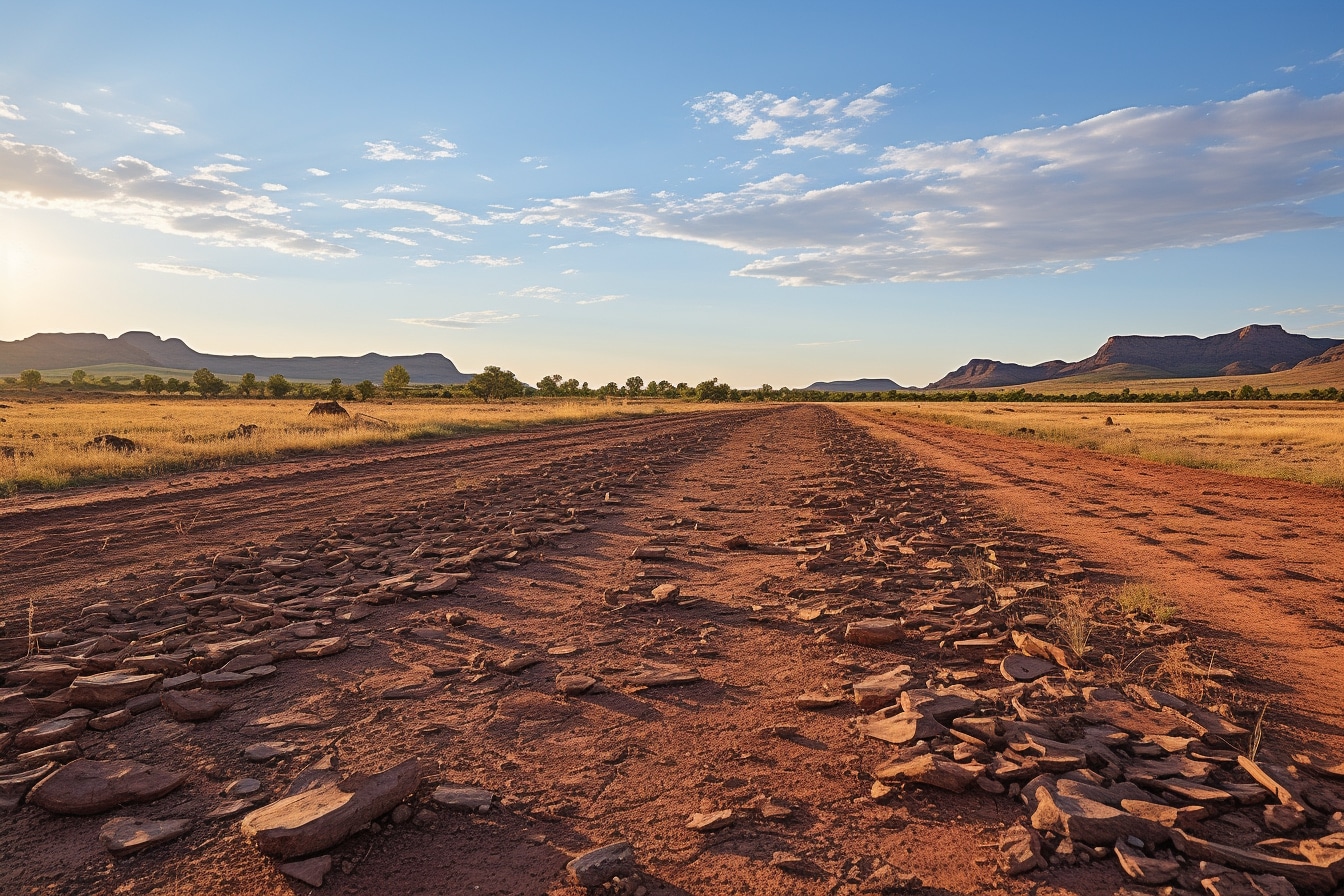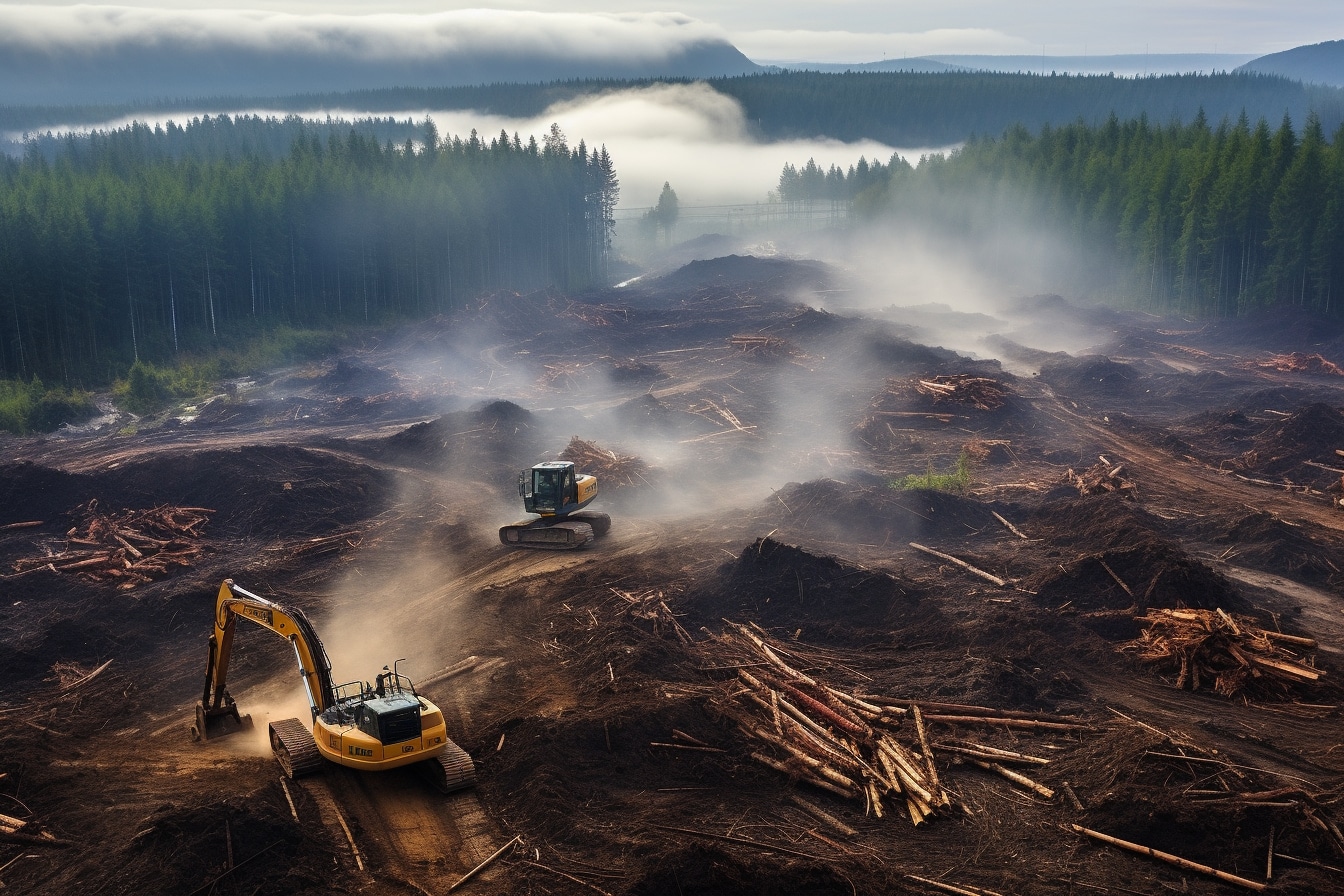How Deforestation Unleashes Bizarre and Devastating Weather Phenomena

The consequences of deforestation on the environment are numerous and very serious. In addition to the loss of biodiversity, it also has a direct impact on weather phenomena. Indeed, deforestation contributes to the increase in extreme weather events such as storms, floods and droughts.
Is deforestation contributing to the increase in extreme weather events?
Deforestation has a direct impact on the climate. Indeed, trees have an important role in regulating the climate. They absorb carbon dioxide and other greenhouse gases, which are responsible for global warming. With deforestation, these gases are released into the atmosphere, which contributes to the increase in global temperature. This increase in temperature has direct consequences on meteorological phenomena. Storms, floods and droughts are becoming more frequent and more intense.
Additionally, deforestation impacts the water cycle. Trees absorb water from the ground and release it into the atmosphere through the process of transpiration. This contributes to cloud formation and climate regulation. With deforestation, the soil becomes less absorbent and water drains more quickly, which can cause flooding. In addition, the absence of trees prevents the formation of clouds, which can cause drought phenomena.

The impacts of human activities on the evolution of climate and storms.
Human activities also have an impact on the evolution of climate and storms. Greenhouse gas emissions are the main cause of climate change. These emissions are mainly due to the combustion of fossil fuels such as oil, gas and coal. Industrial activities such as the production and transport of these energies also have an impact on the climate.
Additionally, intensive agriculture also contributes to increased greenhouse gas emissions. Agricultural practices such as intensive use of fertilizers and agricultural waste management also release greenhouse gases into the atmosphere.
All of these factors contribute to the increase in global temperature, which has direct consequences on weather phenomena. Storms are becoming more frequent and more intense, floods more frequent, and droughts more numerous.
The role of old-growth forests in climate stability
Protection of ancient forests is crucial in the fight against climate change. These ecosystems, which have evolved over millennia, play a determining role in stabilizing the global climate, well beyond their simple function as carbon sinks. Their incomparable biodiversity acts as a real natural infrastructure governing the water and carbon cycles, and is therefore essential for climate resilience.
These forests, often referred to as the “lungs of the planet”, do much more than filter CO2 from our atmosphere. They modulate precipitation regimes on a local and continental scale, thereby influencing the availability of fresh water for millions of people. In addition to being home to phenomenal biodiversity, they play a role in air purification and soil fertility, which are two fundamental aspects of a healthy environment.
When we talk about deforestation, it is imperative to consider the irreversible loss of these thousand-year-old forests. Once destroyed, restoring them is a process that can take several hundred years, if it is even possible. Protection of ancient forests must therefore be an absolute priority, not only for their role in biodiversity but also for their crucial influence on climate and hydrology on a planetary scale.
The indirect impacts of deforestation of old-growth forests are also of concern. Habitat loss leads to reduced ecological resilience, making remaining ecosystems more vulnerable to climate disruption and invasive species. This weakening of ecosystems can lead to unpredictable chain reactions, further destabilizing the climate and accentuating extreme weather phenomena.
To address the issue from a more global perspective, it is essential to integrate the conservation of old-growth forests into international strategies to combat climate change. Environmental agreements and legislation must recognize the intrinsic value of old-growth forests and integrate them as key elements in planning for the sustainable management of natural resources and the reduction of greenhouse gas emissions.
Engagement of local communities in forest conservation is also an aspect that deserves special attention. Indigenous peoples and local communities who directly depend on forests for their survival have traditional knowledge that is essential for sustainable forest management. Recognizing and integrating this traditional wisdom into conservation policies could prove instrumental in maintaining climate stability.
Innovative approaches to combat deforestation
Beyond recognizing the impact of deforestation on weather phenomena and the climate, innovative approaches are being developed to stem this scourge. These innovative strategies focus not only on the conservation of existing forests but also on the restoration of deforested areas. They constitute a new horizon in the fight against climate change and environmental degradation.
Emerging technologies in forest monitoring
The use of advanced technologies to monitor forests plays a key role in preventing illegal deforestation. Drones, satellites and smart sensor systems now provide real-time data on the condition of forests. These technologies make it possible to quickly detect unauthorized changes in forest cover and respond effectively. Integrating artificial intelligence into these systems amplifies their effectiveness, enabling in-depth data analysis that can predict and prevent harmful activities before they cause irreparable damage.
The green economy and the role of businesses
The involvement of businesses in the fight against deforestation marks a decisive turning point. The transition to a green economy encourages companies to adopt sustainable practices and reduce their carbon footprint. Initiatives such as “zero deforestation” and support for certified products from sustainable forest management are gaining ground in corporate strategies. By promoting biodiversity and ecosystem services, these companies become key partners in the preservation of forests.
Ecological restoration and agroforestry
Restoring degraded forests through ecological restoration and agroforestry is a direct response to deforestation. These methods not only encourage the return of biodiversity but also contribute to improving the livelihoods of local populations. Agroforestry, which combines agriculture and forestry, helps maintain an ecological balance while providing economic resources to communities.
Community involvement and education
Education and involvement of local communities are essential to change behavior towards forests. Educational programs aimed at raising awareness of the effects of deforestation and promoting sustainable alternatives help strengthen community forest management. When communities are equipped to manage their forests sustainably, they can actively participate in the conservation and restoration of forest ecosystems.
Green finance and incentives
Mobilizing green finance, through carbon credits and other financial mechanisms, provides economic incentives for forest conservation and restoration. Reforestation and conservation projects can thus become financially viable, creating a powerful incentive for investors and governments to support sustainable forest management initiatives.
Comments
Leave a comment